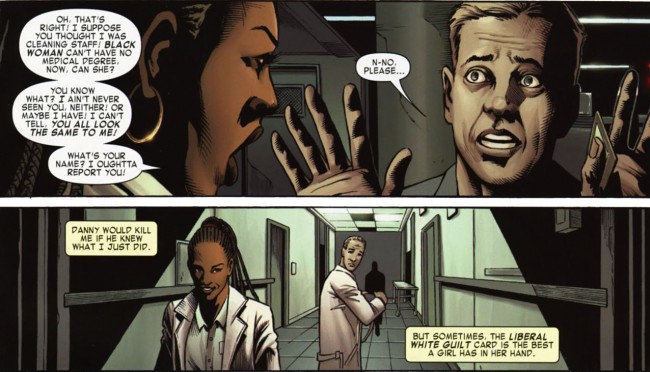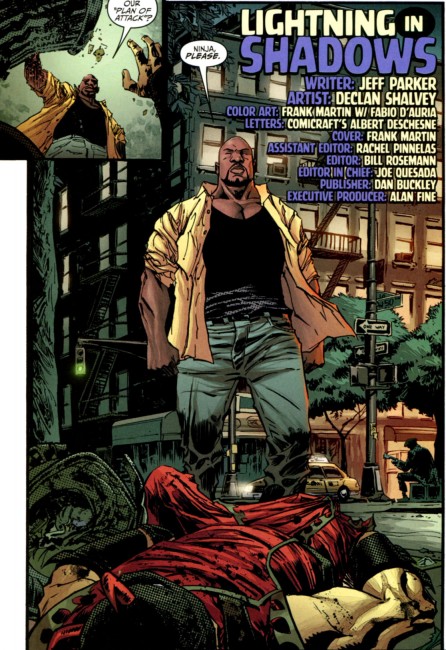
The Ongoing Conversation About The Perception of Artists in Comics
August 1st, 2013 Posted by david brothersThere’s a conversation going on in comics right now that I think is very interesting. It’s about the role, responsibilities, and perception of the artist—mostly pencillers/inkers, but colorists and letterers as well—in the comics industry. It’s wide-ranging, and I thought it would be beneficial to gather most of the posts to date in one place, both for any journalists who are thinking about writing about it and other people who are curious, but don’t know where to start. A lot of these posts are responses to or build off other conversations.
I don’t have everything. Twitter’s a big part of the conversation, as is tumblr, but it’s impossible to stay on top of everything, especially as more voices start talking. This is just the beginning. If you see a link I haven’t posted, drop a comment below.
–Declan Shalvey, comics artist, answers a tumblr question about comics reviews before talking a bit about how reviewers talk about art.
–Andy Khouri, writer about comics, explored Brian Stelfreeze’s work on Day Men, and what that may mean for comics artists in general. He talks about how we credit artists, how we credit writers, and how basic logistics often forces artists into complicated situations.
–Dennis Culver, artist, rounded up a few tweets he made on the subject of critics, artists, and comics. It spins from how critics do their job to why artists should be considered co-authors/storytellers, and why talking about art is vital.
–I wrote about Andy and Dennis’s posts, quoting Dennis’s in its entirety, and added my own thoughts on how we appreciate artists in comics from the perspective of a fan and critic.
–Amy Reeder, artist, responds to and builds on my post and talks about what drives her to buy comics, and talks about the greater trend of undervaluing artists.
–Amy Reeder & Brandon Montclare, collaborators, discuss their experience at San Diego Comic-con 2013 and also the role of the artist in production.
–Sarah Horrocks, artist, talks about her frustrations with certain aspects of the comics industry, springboarding off this Steven Grant essay at CBR.
–Nolan T Jones, writer, takes issue with a few of Horrocks’s points and speaks from the perspective of a writer on the subject.
–Sloane Leong, artist, talks about comics industry logistics by way of a Pacific Rim graphic novel, and talks about why the assembly line method of making comics actually hurts the artform.
–Amy Reeder & Brandon Montclare, collaborators, talk specifically about the role of artists in comics, with plenty of frank talk from writer Montclare and artist Reeder on their expectations and frustrations.
–Podcaster Pat Loika gathers artists Gabriel Hardman, Reilly Brown, Declan Shalvey, and Nick Pitarra to talk about the subject du jour in a conversation that’s as pointed as it is funny.
–Dennis Culver, artist, gathers more tweets, this time discussing the economics of being a comics artist and the relationship between writers and artists.
–Costa Koutsoutis, writer, replies to Dennis Culver’s recent post about economics and discusses the effort writers put forth in creating scripts.
–Leia Weathington, writer, talks about her position when it comes to working with artists and honor. Weathington’s response was sparked by a tweet conversation that I believe begins here before fracturing all over the place. This was packaged into Storify from Weathington’s tweets by Erika Moen, an artist.
–Declan Shalvey, comics artist, discusses working as an artist in the comics industry.
Additions:
–Michael May, writer about comics, builds off a statement from Declan Shalvey and talks about why reviewers need to talk more about art.
–Sloane Leong, artist, discusses the differences in responsibility between writers and artists and looks at the various options creators have for deals.
–Paul Allor, writer, talks about writers and artists from the POV of a working & aspiring writer, in addition to talking about the ways writers view working with and paying artists.
–Paul Allor, writer, talks about the unique aspects of comics collaboration and explores ideas about the way credit is divvied up or displayed.
–Bryan Hitch, artist, talks to Kiel Phegley at CBR about working on corporate comics and feeling underappreciated, despite his history with the company and position in the industry.
–Pat Barrett, artist, talks about the New Yorker improperly crediting a drawing of Iron Man and (briefly) their history with comics.
–Shea Hennum, writer about comics, looks at the idea of visual consistency, particularly in terms of Prophet, a comic with a fistful of artists on regular duty.
–Val Staples, colorist, speaks to Steve Morris at The Beat about life as a colorist, including details on how long books take and vacations when freelance.
–Brigid Alverson at Robot 6 takes a close look at writer Jeremy Holt’s comments on Twitter about pay & artists, and the large comments section discusses journalistic standards, paying in comics, and personal experiences.
–The Beat (no specific byline) talks about writers paying artists and the varying responsibilities of each creator in the comics-creating process.
–Antony Johnston, writer, talks about the debate in general terms and the specifics of making comics, including advice for how to do better as a reader and creator.
–Amy Reeder, artist, on what artists actually do with a writer’s script, and the varying difficulties both sides have in getting work.
–David Fairbanks, writer about comics, on the idea of cheapening your art by working for free, and collaborative partnerships.


